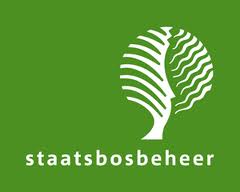The UK Government’s intention to dispose of the public forest estate in England, that led to over half a million signatures by members of the public objecting to the plans, were finally scrapped in mid February (read more). The plans have not been laid completely to rest however, and we currently await an announcement about an independent panel that will be formed to consider a way forward.
One aspect that is likely to move up the agenda is a review of the Government’s delivery mechanism for forestry in England; currently a partnership between Natural England and Forestry Commission. This current arrangement came from Lord Haskins’ Rural Delivery Review of 2003, which saw policy functions moving to Department for Environment, Food and Rural Affairs (Defra).
Haskins accepted that not all his recommendations would be put in place, and in the case of forestry stated that he was “still not entirely clear why there is a special case for having the Forestry Commission as a separate entity” outside the new agency. Other contributors at the time argued that the Forestry Commission should be integrated, or merged with other agencies into a single ‘Natural Resources Agency’. This sentiment was echoed more recently, as a result the public forest sell-off proposals, by one leading conservation charity: A Forest and Wildlife Service – let’s have one please.
I thought it would be interesting to look at how forestry delivery operates in a neighbouring country: the Netherlands. A country that is nearly as crowded as England and has various topographical and ecological similarities, including having relatively a very low forest cover for a European country.
In the Netherlands forestry is undertaken by the Forestry and Wildlife Service Staatsbosbeheer.
 Staatsbosbeheer manages 250,000 hectares of land for sixteen million Dutch people. As it states on the website:
Staatsbosbeheer manages 250,000 hectares of land for sixteen million Dutch people. As it states on the website:
“Sixteen million people on that tiny piece of earth. These should not be in a straitjacket. They need space.”
Staatsbosbeheer has the following views:
- Mankind is part of nature and the landscape.
- Nature that fulfils multiple functions and with which we can achieve multiple objectives.
- A clear vision of sustainable nature management which assumes the optimum situation per reserve which gives room to what is already present.
- A recreation policy attuned to society’s wishes.
- Sustainable management methods that contribute to the production of renewable raw materials such as biomass and timber.
With a similar genesis to the UK’s Forestry Commission, which was established in 1919, the Netherlands was also severely deforested and there was huge demand for timber; leading to establishment of a National Forest in 1899. During its first thirty years, Staatsbosbeheer replaced lost forest cover by planting commercial plantations. By the late 1960s, the Netherlands could no longer compete with timber producers in larger countries. Changes in thinking on nature and the environment led to growing criticism about commercial forestry, which led to a focus on the development of natural mixed forests.
Alongside aims to increase experience for the public in nature and recreation, Staatsbosbeheer focuses on delivering and maintaining the widest possible diversity in Dutch landscapes and ecosystems, having been commissioned by the Dutch government and to manage a large part of the nature reserves in the Netherlands. Sustainability is seen as critically important so that the green living environment can be retained for future generations. It also has a focus on renewable resources. Staatsbosbeheer makes a sustainable, environmentally friendly contribution to the Netherlands’ timber needs with FSC-certified wood for, for example, floors, window frames and furniture.
If you have experience of the Dutch forestry model it would be interesting to hear your views, or perhaps experience from other countries that would provide some useful lessons to us in the UK.
Gabriel Hemery
 This work is licensed under a Creative Commons Attribution- NonCommercial- NoDerivs 3.0 United States License.
This work is licensed under a Creative Commons Attribution- NonCommercial- NoDerivs 3.0 United States License.

Gabriel – thank you for this – a really useful post. Personally, I think this could be the way ahead – combining Fc deivery skills and NE expertise into a really powerful deliverer of the things this country needs – which includes timber, but not at the top of the list. What impressed me in Holland was Staatsbosbeheer managing the superb, huge Oostvardesplassen wetland nature reserve with public support – an the ‘close to nature’ management regime. Foresters are great achievers – what we need to do now is make sure that achievement is pointed in the right direction.
Thanks Rod. It sounds as if you have more direct experience of the Dutch model than I do, so I welcome your thoughts on this.
I am not so sure regarding on your comment that all a Forester needs is direction. Isn’t it the private forester that retains the longest view, compared to all others, and puts the forest’s needs first? We certainly should not be following the ebb and flow of policies from Government and the NGO elite. The English landscape is littered with the relics of abandoned forestry policies afterall!
Gabriel